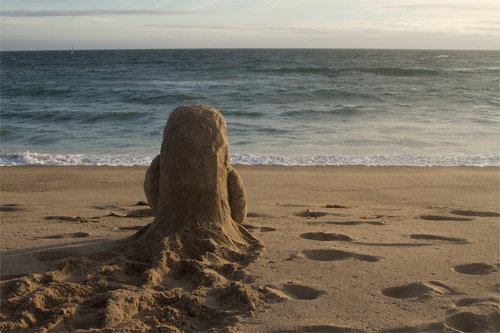Saturday, October 22, 2011
ANIMATION: KIRSTEN LEPORE
Bottle is the stopmotion story of two friends who pass messages across the world through the use of a glass bottle. The animation starts with the movement of a mass of sand, scuttling around the beach appearing to look for something; then the bottle itself is discovered. Throughout the animation the two characters trade items using the bottle as the medium; the result of this; two fully personified mounds of sand and snow. The story is deep and much more than meets-the-eye, this 6 minute short is both thought-provoking and inspiring.
Watch Bottle on Youtube or Vimeo
Labels:
Animation,
Kirsten. Lepore,
Stop Frame
Thursday, October 20, 2011
VISUAL TIMELINE OF ANIMATION
1831 Phenakitoscope
1834 Zoeotrope
1868 Kinetograph; flipbook
1872 Eadward Muybridge begins research into animals in motion
1889 Kinetoscope
1886 Vitascope
1887 Praxtinoscope, Charles-Émile Reynaud
1892 Reynaud begins showing his animations in his theatre combining his earlier Praxtinoscope and a projector

1906 Humorous Phases of Funny Faces by J. Stuart Blackton
1908 Emile Cohl makes Phantasmagorie, first film depicting white figures on a black background
1910 'En Route' is made, it is the first cut out animation
1914 'Gertie, the Trained Dinosaur'. 10,000 hand-drawn frames
1917 'El Apostol' the first full length animation. 58,000 frames and 70 minutes
1919 'Felix the Cat' by Pat Sullivan
1923 Disney is founded by brothers Walt and Roy
1928 Steamboat Willie, first film using synced sound
1961 John Whitney uses computers to generate graphics for title sequences. He starts to develop his hardware and create algorithms for more complex digital images
1979 'Graphics Group' is created, later renamed Pixar
1982 TRON uses CGI combined with film footage
1983 CGI is used in scenes from Star Wars, the Wrath of Kahn
1986 Pixars first animation, 'Luxo Jr' is released
1993 Jurassic Park uses CGI for realistic living creatures
1995 Toy Story is the first feature length, completely CGI movie
1834 Zoeotrope
1868 Kinetograph; flipbook
1872 Eadward Muybridge begins research into animals in motion
1889 Kinetoscope
1886 Vitascope
1887 Praxtinoscope, Charles-Émile Reynaud
1892 Reynaud begins showing his animations in his theatre combining his earlier Praxtinoscope and a projector

1906 Humorous Phases of Funny Faces by J. Stuart Blackton
1908 Emile Cohl makes Phantasmagorie, first film depicting white figures on a black background
1910 'En Route' is made, it is the first cut out animation
1914 'Gertie, the Trained Dinosaur'. 10,000 hand-drawn frames
1917 'El Apostol' the first full length animation. 58,000 frames and 70 minutes
1919 'Felix the Cat' by Pat Sullivan
1923 Disney is founded by brothers Walt and Roy
1928 Steamboat Willie, first film using synced sound
1961 John Whitney uses computers to generate graphics for title sequences. He starts to develop his hardware and create algorithms for more complex digital images
1979 'Graphics Group' is created, later renamed Pixar
1982 TRON uses CGI combined with film footage
1983 CGI is used in scenes from Star Wars, the Wrath of Kahn
1986 Pixars first animation, 'Luxo Jr' is released
1993 Jurassic Park uses CGI for realistic living creatures
1995 Toy Story is the first feature length, completely CGI movie
Friday, October 14, 2011
RESEARCH: ORIGINS OF ANIMATION
Traditional animation dates back to 180AD, with the first zoetrope invented by the Chinese Ting Huan. Devices such as the Thaumatrope and the Phenakistoscope were early techniques to create simple moving image animations.
The first hand-drawn animation is said to be Humourous Stages of Funny Faces (1906) by J. Stuart Blackton. The first use of stop-motion animation is credited to Albert E. Smith and J. Stuart Blackton together, their short video titled The Humpty Dumpty Circus shows figures doing various acrobatics. Although I would consider the Humourous Stages of Funny Faces a stop-frame animation in itself.
The first hand-drawn animation is said to be Humourous Stages of Funny Faces (1906) by J. Stuart Blackton. The first use of stop-motion animation is credited to Albert E. Smith and J. Stuart Blackton together, their short video titled The Humpty Dumpty Circus shows figures doing various acrobatics. Although I would consider the Humourous Stages of Funny Faces a stop-frame animation in itself.
Thursday, October 06, 2011
Wednesday, October 05, 2011
Monday, October 03, 2011
Subscribe to:
Comments (Atom)

























